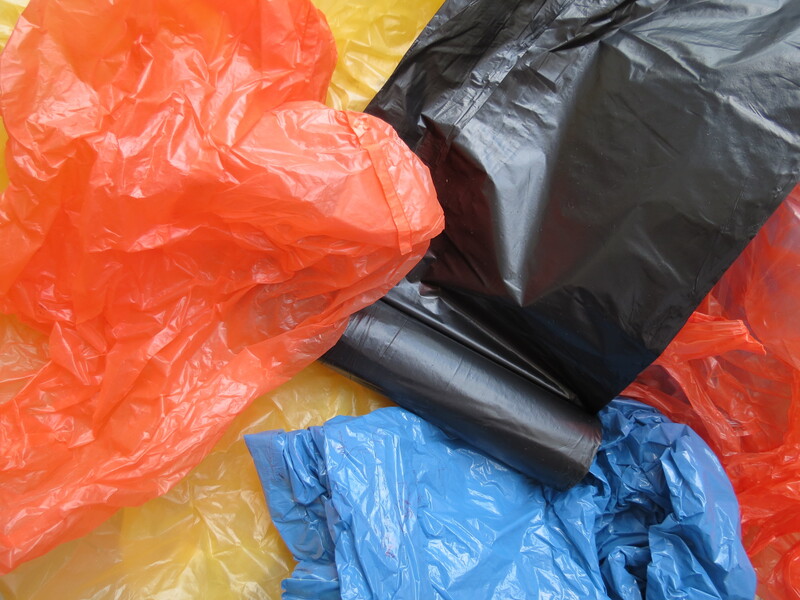Your Sofa's Longevity: Expert Storage Advice
Your sofa is more than just a comfortable seat; it's a valuable investment and the heart of your living space. But what happens when you need to store it for a while? Whether you're moving, renovating, downsizing, or just redecorating, proper sofa storage is essential to secure its long-term quality and functionality. In this comprehensive guide, you'll discover expert storage tips ensuring that your beloved couch stays clean, safe, and ready for many more years of lounging comfort.
The Importance of Proper Sofa Storage
Storing a sofa improperly can lead to issues such as mold, pests, warping, and fabric deterioration. These issues not only decrease the visual appeal and comfort but can also significantly reduce your sofa's lifespan. Following best storage practices ensures your sofa remains in pristine condition, preserving both its aesthetic and financial value.
- Prevents structural damage like warping or frame breakage
- Protects upholstery from moisture, dust, and pests
- Keeps cushions and materials fresh and free of odors
- Simplifies the moving process for future setups

Essential Steps for Preparing Your Sofa for Storage
1. Clean Thoroughly Before Storage
Cleaning is the most critical first step to safeguard your sofa's longevity during storage. Dirt, food crumbs, or oils left on the sofa can create stains, unpleasant smells, or attract insects.
- Vacuum all surfaces. Use a vacuum with an upholstery attachment to remove dust, pet hair, and debris from cushions, crevices, and under the seat.
- Spot-clean stains. Treat any stains according to the manufacturer's fabric care labels. For leather sofas, use specialized leather cleaners, and for fabric, gentle upholstery shampoo usually works best.
- Remove detachable cushions. Wash covers if possible and allow all fabrics to dry thoroughly to avoid mildew.
2. Disassemble When Possible
Most modern sofas are designed for some level of disassembly, which not only eases moving but reduces stress on framework and upholstery.
- Remove legs and detachable arms to minimize breakage risk during transport or storage.
- Detach cushions and pillows and store them separately in breathable fabric bags.
- Label screws and small hardware in a separate bag taped to the frame for easy re-assembly.
3. Choose the Right Storage Location
Your choice of storage space is a crucial factor for your sofa's long-term preservation. Not all locations are suitable for furniture storage.
- Opt for climate-controlled storage units that maintain stable temperatures and humidity levels to prevent mold, mildew, and wood warping.
- Avoid storing your sofa in garages or sheds lacking proper insulation, as exposure to extreme temperatures and humidity can cause irreparable damage.
- Consider home storage in spare rooms, if a commercial unit is not an option, but avoid basements or attics prone to dampness or heat.
Best Practices for Sofa Protection in Storage
Proper Wrapping and Covering Techniques
Many sofa owners make the mistake of wrapping their furniture in plastic, hoping to provide extra protection. However, this can often do more harm than good.
- Use breathable covers such as cotton drop cloths or moving blankets. These allow air circulation and prevent moisture buildup, which is vital for leather and fabric sofas alike.
- Avoid using thick plastic wraps directly on the upholstery, as these trap humidity and can foster mold growth.
- For long-distance transport, wrap the sofa in plastic temporarily, but remove it once in storage.
Proper Placement in the Storage Unit
Where and how you place your sofa in storage makes a significant difference to its longevity.
- Elevate off the ground: Place your sofa on pallets or furniture risers to prevent contact with potential ground moisture.
- Store upright and avoid stacking: Always store the sofa in its intended upright position. Avoid piling heavy objects atop the sofa, as this can deform cushions and frames.
- Maintain breathing space: Leave several inches between your sofa and the walls for air circulation--this helps fend off household pests and mildew.
- Store cushions and pillows separately: Never stuff cushions inside the sofa. Instead, place them in clean, dry containers or bags, slightly fluffed to retain their shape.
Defending Against Common Storage Threats
- Pest control: Before storing, ensure the area is free from signs of rodents or insects. Consider using non-toxic pest deterrents like cedar chips or lavender sachets.
- Moisture prevention: For added protection, use desiccant packs or silica gel within the storage unit to absorb excess moisture.
- Regular checkups: If storing the sofa for several months or more, periodically check the condition of the space and the furniture. This allows you to address any emerging issues early.
Specialized Storage Tips for Different Sofa Types
Storing Leather Sofas
Leather is both beautiful and delicate, requiring some extra steps for long-term storage care.
- Condition the leather with a high-quality leather conditioner to prevent drying, cracking, or fading during extended storage.
- Avoid direct sunlight even in storage, as UV rays can degrade leather over time.
- Maintain steady humidity, as leather is susceptible to both excessive dryness and moisture.
Storing Fabric Sofas
- Check manufacturer's washing instructions and ensure all coverings are washed before storage.
- Use moth repellents such as cedar balls to protect natural fibers like cotton, wool, or linen.
Sectional Sofas and Recliners
- Disassemble modular sections, wrapping each section individually.
- Label sections for straightforward reassembly.
- Take extra care with recliner mechanisms, ensuring parts are secured and lubricated if necessary.
Expert Advice for Long-Term Sofa Storage
Maintenance During Storage
Even after your sofa is secured in storage, routine checks and minor maintenance can make a world of difference for its longevity.
- Inspect every few months for signs of moisture, pests, or mold.
- Refresh air circulation by quickly airing out the unit on each visit.
- Retreat leather with conditioner annually if the storage period exceeds one year.
Insurance and Inventory
Consider insuring your sofa if it's of significant monetary or sentimental value. Also, keep an inventory of stored items, noting any pre-existing blemishes or wear. This enables easier claims and smoother return to use.
Reintroducing Your Sofa After Storage
When the day comes to welcome your stored sofa back into your living space, following a smart protocol will ensure you enjoy it for years ahead.
- Inspect the sofa thoroughly for any issues like odors, pests, or fabric discoloration.
- Clean all surfaces--vacuum, spot clean, or brush off dust that may have settled.
- Reassemble carefully, referencing your labels and stored hardware.
- Let the sofa air out, preferably near open windows to dissipate any residual storage smells.

Frequently Asked Questions About Sofa Storage Longevity
How long can I safely store a sofa?
With the right preparation and storage conditions, you can safely store a sofa for six months to several years. Climate-controlled units and regular maintenance play the largest roles in determining your sofa's longevity in storage.
Is it okay to stand a sofa on its end?
No. It's best to store your sofa upright, as standing it on one end can cause frame stress, fabric sagging, and permanent cushion distortion.
Will plastic wrap really ruin my sofa?
Plastic wrap isn't inherently bad, but it should only be used temporarily for moving. For long-term storage, tightly sealed plastic can trap condensation, leading to mildew, mold, and odor issues.
What should I do if I find mold on my sofa after storage?
Act quickly--move the sofa to an open area, vacuum thoroughly, and treat with a mixture of mild detergent and water. If the issue is severe or the sofa contains internal water damage, consult a professional cleaner.
Conclusion: Prolonging the Life of Your Sofa With Smart Storage
Your sofa's longevity is closely tied to how well you prepare and store it during periods of non-use. By following these expert storage recommendations, you protect your comfort, investment, and the heart of your home for years to come. Pay careful attention to cleaning, climate control, covering, and periodic maintenance--these simple steps can add years to your sofa's usable life, saving you time, money, and hassle in the long run.
Whether you're stashing away a cherished heirloom, a modern sectional, or a trusty family couch, following these expert storage tips ensures your sofa will be ready for many happy returns.



